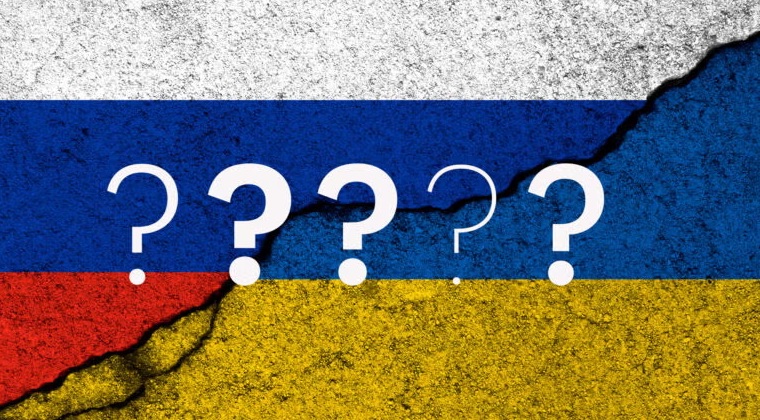 Pic.: dornsife.usc.edu
Pic.: dornsife.usc.edu
The Trump-Putin summit in Alaska is over, and peace in Ukraine isn’t yet nigh. But the two most likely endings to the Russian invasion are coming into view.
Ukraine could lose land but survive as a secure and sovereign, if shrunken, nation state. Alternatively, it could lose both land and sovereignty, falling back into Moscow’s sphere of influence, ‘The Wall Street Journal’ writes.
Which will come to pass — and when — is no clearer after Alaska, which disappointed hopes for a diplomatic breakthrough.
Russian President Vladimir Putin brushed off the push by the U.S. and Europe for a cease-fire that would freeze the current front line, followed by talks about control of Ukrainian territories and guarantees for Ukraine’s security. Instead, Putin signaled he would continue the war until Ukraine and the West are willing to satisfy Moscow’s broader geopolitical aims.
“We are convinced that, in order for the Ukrainian settlement to be sustainable and long-term, all the root causes of the crisis, which have been repeatedly discussed, must be eliminated, all of Russia’s legitimate concerns must be taken into account, and a fair balance in the field of security in Europe and the world as a whole must be restored,” Putin said after the summit.
Putin said Ukraine’s security also should be ensured — but past talks have shown the devil is in the details.
His emphasis on “root causes” — his standard shorthand for a litany of grievances about Ukraine’s Westward-oriented political trajectory and the North Atlantic Treaty Organization’s expansion into central and Eastern Europe — show he hasn’t given up his overarching goals of restoring Russian political sway over Ukraine, rebuilding Moscow’s sphere of influence in Europe’s east, and regaining the status of a global great power.
That leaves two plausible endings to the biggest war in Europe since World War II. Here is what they mean, and what they depend on.
Partition With Protection
Ukraine’s leadership has quietly come to accept that it doesn’t have the military strength to get its borders back in full. Last week, Ukrainian President Volodymyr Zelensky indicated his willingness to negotiate about territory in video calls with President Trump and European leaders — after a cease-fire that freezes the current front line.
Kyiv and European countries say they would never give legal recognition to Russia’s gains, a step that would turn international law into an incentive for further conquest instead of a taboo against it. But they are signaling they would live with the reality of de facto Russian control.
The Kremlin continues to insist that Ukraine retreat from areas that it claims as Russian but doesn’t control — notably the Ukrainian-held part of the Donetsk region, where Ukraine holds a chain of fortified cities that Russia so far has been unable to conquer.
But the biggest question is what happens to the other 80% of Ukraine.
Kyiv and its European allies want to protect the future security and sovereignty of the remaining rump with a combination of strong Ukrainian military defenses and Western security assistance. A so-called “coalition of the willing” led by the U.K. and France wants to deploy some of its own troops to Ukraine as a further deterrent against a future Russian attack.
European leaders are hoping that the U.S. would join security guarantees for Ukraine, and they have been encouraged in recent days by Trump’s apparent openness to it. Any possible U.S. role remains unclear, however.
Partition With Subordination
Russia’s demands since 2022 have included shrinking the size of Ukraine’s armed forces, limiting its weaponry and its supplies of Western armaments, and changing its political regime — including its constitution, its leadership, and its policies on language, history and national identity.
The greatest danger for Ukraine isn’t just losing its east and south. It is that what remains wouldn’t be able to resist a third Russian invasion, following those of 2014 and 2022. The threat could force Kyiv to show deference to Moscow’s wishes about its leadership and its policies at home and abroad.
Such an outcome would turn the surviving rump of Ukraine into a Russian protectorate, amounting to a capitulation for a nation that wants to consolidate its democracy and integrate with Europe and the West.
The battlefield remains the only way Putin could achieve such capitulation terms. Although Russia’s forces continue to make only limited gains in terms of square miles, their main objective is to wear down Ukraine’s army — and the country’s will to fight.
Russia’s advantages in population, troop numbers and financial resources make its war effort look more sustainable than Ukraine’s, most analysts say.

“We agreed to robust security guarantees that I would describe as game changing,” top envoy Steve Witkoff told CNN told Jake Tapper on “State of the Union,” describing the security guarantee as an “Article 5” type protection…He said Putin also agreed to “legislative enshrinement” by Russia to not go into any other territory, in Ukraine or elsewhere in Europe, as part of a potential peace deal.
read more in our Telegram-channel https://t.me/The_International_Affairs

 11:43 18.08.2025 •
11:43 18.08.2025 •






















